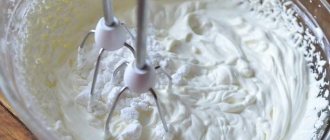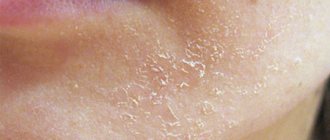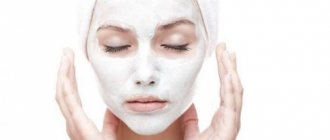Hand cream is a cosmetic product that many of us girls buy on a whim, without paying much attention to the capabilities and quality of this, so to speak, “banal” product. Meanwhile, hands are perhaps one of the most “treacherous” female zones, by which one can judge many things, from the woman’s age to her lifestyle and social status. To keep your hands looking beautiful for as long as possible, you need to start caring for them from a young age, without waiting for external signs of skin aging. Any complete hand care cannot do without a special cream. If you still put the first hand cream you come across or catch your eye with a cute package into your basket, find out how to choose this product correctly. Useful information about hand creams will be presented in our article today.
Types of hand creams
According to their cosmetic effect, hand creams are:
- Nourishing – have a dense and dense consistency, provide the skin with beneficial substances and vitamins, and are suitable for hand care during the cold season.
- Moisturizing – the texture of such products is light and delicate, they saturate the skin with moisture, prevent dry hands, and are suitable for repeated application throughout the day.
- Protective - have a dense, oily structure, create a thin protective film on the skin of the hands, protecting it from the effects of cold and detergents, recommended for sensitive and dry skin of the hands.
- Anti-aging - help fight the signs of aging of the skin of the hands (sagging, dryness, wrinkles), reduce the severity of age spots.
- Therapeutic - eliminate cracks, peeling and dryness of the skin of the hands, have wound healing, anti-inflammatory and soothing effects.
Main components
A correctly determined composition and taking into account the influence of all components of a hand care product will help you choose the right cream or lotion and get the desired result from its use. The composition of any nutritional product must include fats of plant or animal origin, lanolin and glycerin. These main components soften and nourish the skin, creating a protective water-repellent film. The remaining ingredients are added depending on the purpose of the cream, the price segment and the target consumer audience.
- Vitamins and minerals. They are mandatory components of all modern gels and creams. Vitamin E helps maintain the protective functions of the skin. Anti-aging creams contain vitamin A.
- Vegetable oils and extracts. Modern cosmetology pays special attention to these components due to their natural origin. Avocado, cocoa, and jojoba oils give the skin softness and elasticity. Extracts from tea tree and aloe promote wound healing and have antiseptic and anti-inflammatory properties. Popular additions include lavender, sandalwood, and lemongrass oils.
- Collagen and elastin. Invariably present in geriatric skin care products. Prevents premature aging of cells, improves the elasticity and natural structure of the skin.
- Water. Any skin care product consists of 60÷80% of it. It is the connecting link of all components and enhances the moisturizing properties of creams.
The choice of one or another hand care product depends on the specific skin type and the presence of allergic reactions. The use of protective, bactericidal, antifungal or decongestant creams should be coordinated with a dermatologist.
Composition of hand creams
Water is the basis of any hand cream, regardless of its type. Its amount in the composition of the product can vary between 65-80%, the rest comes from additional components: fats, vitamins, plant extracts and others. Acting as a binding component of accompanying elements, water prevents excessive oiliness of the cream and provides an even more pronounced moisturizing effect. Glycerin in hand products performs moisturizing and softening functions; lanolin also softens the epidermis well, providing the necessary nutrition and hydration. In the production of hand creams, oils are often used - sea buckthorn, olive, wheat germ oil, flaxseed, sandalwood, cocoa, jojoba, lavender. Animal fats can be used instead of vegetable fats. In any case, the main task of fatty components is to protect the skin with the help of a water-repellent film that they form on its surface. In addition, some oils provide anti-inflammatory and bactericidal effects - for example, tea tree oil. Any good hand cream contains vitamins. Thanks to them, the skin is restored, rejuvenated, and its protective properties are activated. If the purpose of the cream is anti-aging, then its composition must contain elastin and collagen. These components increase the firmness and elasticity of the skin and prevent its premature aging. Among the ingredients of hand creams you can also often find all kinds of plant extracts: aloe, chamomile, wormwood, calendula, plantain. They work to moisturize the skin, relieve inflammation, heal cracks, and have a bactericidal effect. Some creams contain UV filters that neutralize the harmful effects of UV rays.
Composition of creams beneficial for hands
In order to choose the right hand cream and be satisfied with the result of its use, you need to pay attention to the composition of the cream and know the features of some of its components.
Any hand cream, regardless of how much it costs and where it was produced, consists of 60-80% water. In addition, it is based on: glycerin for softening and moisturizing, lanolin for nutrition, as well as vegetable or animal fats, which form a water-repellent film. Further filling of the cream occurs in accordance with its purpose, price range and consumer orientation.
Vitamins
They are included in most modern hand creams, as they are anti-stress components and activate the protective properties of the skin. In particular, vitamin E supports its natural structure, and vitamin A rejuvenates it.
Plant extracts and oils in hand creams
They have a moisturizing and softening effect. Cocoa butter, avocado oil and jojoba oil make the skin of the hands smooth, tea tree oil has a bactericidal and anti-inflammatory effect, and aloe juice has a wound-healing effect.
Sun filters
They have a double meaning: on the one hand, they protect the skin from ultraviolet rays, on the other, they can cause dehydration of skin cells.
Elastin, collagen, hyaluronic acid
Important components of age-related hand creams, as their action is aimed at maintaining cell elasticity and preventing premature aging of the skin of the hands.
How to apply hand cream correctly?
Despite the apparent simplicity of lubricating your hands with cream, certain recommendations in this regard are still worth considering.
Apply the cream with light, smooth movements in the direction from the fingertips to the wrist. To improve blood circulation and ensure rapid absorption of the product, it should be applied with a simultaneous light hand massage. You need to massage each finger separately, including the nail plate and cuticle area. If the cream is not completely absorbed during the session, its remnants can be gently blotted with a paper napkin. One of the most important rules in using hand creams is to never apply such products in the cold before going outside. Since creams contain a lot of water, under the influence of very low temperatures it can freeze, covering your hands with an icy crust that is by no means unfavorable for the skin. Some girls successfully use homemade hand creams. Recipes for homemade hand creams are given below.
Hand creams: how to choose and apply hand cream correctly
It seems that nothing could be simpler and more pleasant than applying aromatic cream to your hands before bed! But why then do millions of women suffer from chapping, from microcracks that cause inconvenience and spoil their appearance? This happens due to improper selection and application of the cream. After all, often when we buy creams in cosmetic stores or pharmacies, we do not go into detail about why exactly our problems with the skin of our hands began, but simply choose a beautiful tube.
But we must not forget that there are several types of creams. For example, decongestants are not a substitute for emollients; protective creams are applied to undamaged hands; bactericidal and anti-inflammatory will not help moisturize the skin, but will produce a healing effect; nutritious ones will help keep the skin toned, thanks to the vitamins they contain, and antifungal ones will have a healing effect.
Before you buy a cream that is suitable for its purpose and price, you need to carefully study the composition to make sure that all components are well tolerated by each individual skin. Allergies almost never occur to aloe juice, avocado, or jojoba oil, but cocoa butter can irritate the skin by getting into small wounds. Creams containing so-called sunscreens protect the skin from ultraviolet rays, but often cause dryness. Important components of anti-aging skin creams are elastin and collagen, which keep cells in an elastic state.
Often the cornerstone can be the unearthly price of creams. It must be remembered that any cream, no matter where it is produced, consists of 90% water, and the further difference is made by the combination of certain vitamins, active ingredients, oils and extracts. The choice of cream must be approached very individually and responsibly, because if a foreign tube for 500 rubles is not suitable, a domestic one for 25 may be suitable.
In addition to choosing a cream, special attention should be paid to applying it to your hands. A big misconception is the idea that protective creams against wind and cold need to be applied right before going outside. We must not forget that cream is essentially the same water, so it tends to freeze and do more harm than good. You should also not apply the cream in several layers - this is not a mask! You need to rub the cream into the skin of your hands with smooth, caressing circular movements, starting from the nails and ending with the wrist. If, after thorough rubbing, there is still cream on your hands, then you need to remove it with a napkin.
Recipes for the best nourishing creams
Cosmetologists and dermatologists do not recommend frequently changing hand creams - it is better to immediately select the appropriate option and then prepare it mainly.
For dry hands
Such skin needs to be moisturized as much as possible, so the following recipes will be useful:
- First you need to prepare a concentrated decoction of chamomile flowers (2 tablespoons of raw material per 100 ml of water, boil in a water bath for 5 minutes, cool and strain). Add 1 teaspoon each of shea butter and jojoba oil, and to improve the aroma - 5 drops of blood orange essential oil.
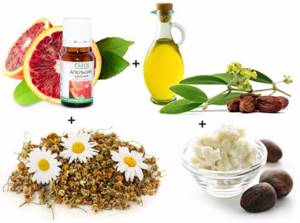
- Place 1/3 teaspoon of cinnamon powder and 1 tablespoon of cocoa butter in a ceramic or glass bowl. The mixture is heated in a water bath until the solid oil is completely dissolved, then 3 drops of any citrus essential oil are added to it.
- The base is half a teaspoon of medical glycerin, to which is added 1 teaspoon of liquid honey, 1/3 teaspoon of wheat germ oil and 3 - 5 drops of juniper essential oil. The consistency of such a cream will be liquid, reminiscent of lotion.
For skin damage
In this case, you need to take care not only of the fastest healing of wounds, but also of preventing inflammatory processes. It is worth making a nourishing cream according to the following recipe:
- prepare an infusion of a series of 1 tablespoon of plant material (dried) and 200 ml of boiling water;
- after 20 minutes, strain the infusion and take 1 tablespoon;
- mix the string with 1 tablespoon of butter and 1/3 tablespoon of honey.
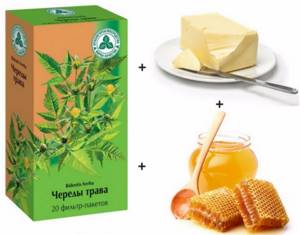
The mass should be well mixed, and it can be stored in a glass container for no more than 6 days and only in a cool place.
If you apply this cream to the skin around the nail plate, you can get rid of hangnails. But for this you will have to use a nourishing cream with healing properties for at least 3 weeks every day.
To learn how to prepare a cream for dry and damaged hand skin, watch this video:
For nails
In principle, the nail plates can be treated with the same nourishing cream that is intended for the skin of the hands. But if there are pronounced problems in the form of separation and brittleness of nails, then it is worth trying a recipe of 1 tablespoon of onion juice, 100 ml of medical glycerin, 3 tablespoons of lemon juice and 1 tablespoon of honey.
All ingredients are mixed well, and the cream is applied directly to the nail plates at least once a day. It is extremely undesirable to involve even the cuticle in the procedure, so before each manipulation you need to lubricate the skin around the nail with a thick layer of rich cream.
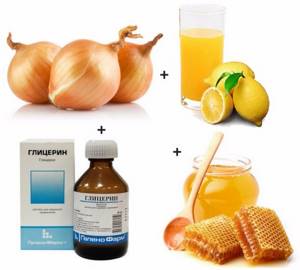
There is also a recipe for nourishing nail cream, which should remain in place for several hours. In principle, you can consider this remedy as a compress. So, you should take ½ cup of fresh rowan, mash the berries into a paste and add 3 tablespoons of olive oil to it. The resulting mixture is applied to the nail plates in a fairly thick layer, covered with foil and removed only after 3 hours.
For body
This means a product that will help solve the problem of rough skin on the knees, heels and elbows. A recipe based on beeswax may come in handy - you only need 20 g of it, and in addition to it add:
- 2 tablespoons cocoa powder;
- 10 drops of jasmine or any citrus essential oil;
- 1 tablespoon glycerin.
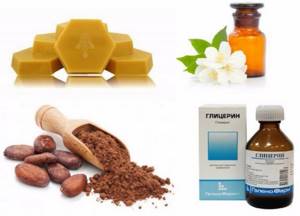
It will be better if you add 4 drops of seed essence to the ready-made composition - it is sold in pharmacies or specialized cosmetics stores. This ingredient is especially useful if the skin in these areas has been roughening for a long time, and its color has changed to dark gray.

